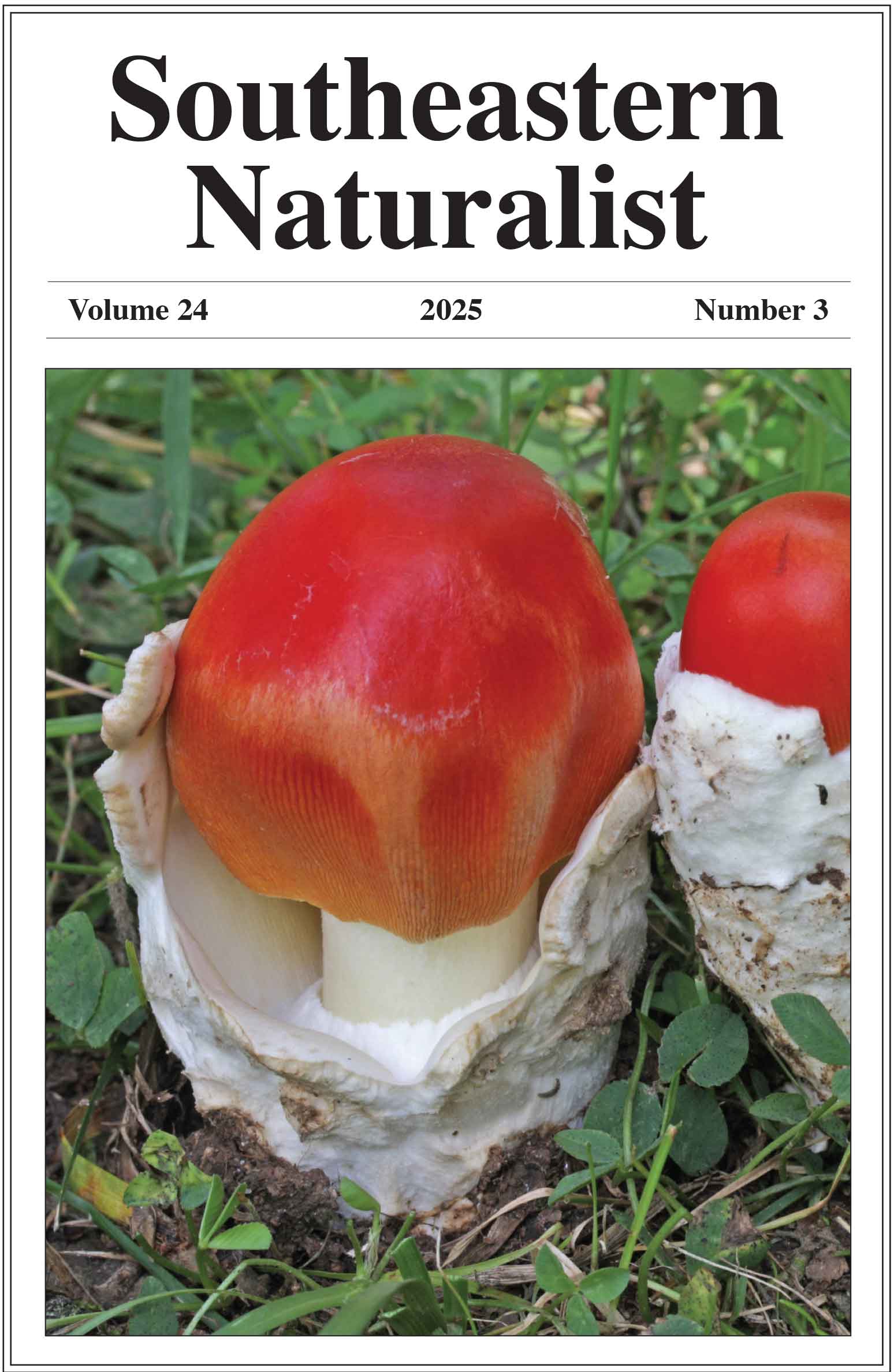Nine-banded Armadillo (Dasypus novemcinctus) Occupancy and Density Across an Urban-to-Rural Gradient
Leah E. McTigue1,* and Brett A. DeGregorio2
1Department of Biological Sciences, University of Arkansas. Fayetteville, AR 72701. US Geological Survey, Michigan Cooperative Fish and Wildlife Research Unit, Michigan State University, East Lansing, MI 48824. *Corresponding author.
Southeastern Naturalist, Volume 23, Issue 4 (2024): 529–548
First published early online: 18 December 2024
Abstract
Dasypus novemcinctus (Nine-banded Armadillo) is the only species of armadillo in the US and is notable because it alters ecosystems by excavating extensive burrows used by many other wildlife species. Relatively little is known about its habitat use or population densities, particularly in developed areas, which may be important to facilitating its range expansion. We used camera traps to explore patterns in armadillo detection and occupancy and applied the random-encounter model to calculate population densities at 12 study sites in the Ozark Mountains of Arkansas along an urban-to-rural gradient. Armadillo detection probability was best predicted by temperature (positively) and precipitation (negatively). We found that armadillo occupancy probability decreased on steep slopes and increased at higher elevations. Contrary to our predictions, we found no evidence that other landcover or anthropogenic variables influenced probability of armadillo occupancy. Armadillo density varied considerably between sites (mean = 4.88–46.20 armadillos per km2) but was not correlated with any environmental or anthropogenic variables that we measured. Nine-banded Armadillos occurred at all of our study sites demonstrating that the species is a habitat generalist which likely contributes to its remarkable range expansion across most of the southeastern and midwestern US.
![]() Download Full-text pdf (Accessible only to subscribers. To subscribe click here.)
Download Full-text pdf (Accessible only to subscribers. To subscribe click here.)
Access Journal Content
Open access browsing of table of contents and abstract pages. Full text pdfs available for download for subscribers.
Issue-in-Progress: Vol. 24( 4) ... early view
Check out SENA's latest Monograph and current Special Issue in progress:













 The Southeastern Naturalist is a peer-reviewed journal that covers all aspects of natural history within the southeastern United States. We welcome research articles, summary review papers, and observational notes.
The Southeastern Naturalist is a peer-reviewed journal that covers all aspects of natural history within the southeastern United States. We welcome research articles, summary review papers, and observational notes.